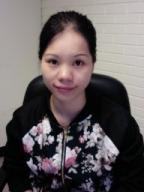
Biography
EDUCATION
Ph.D. (Chemistry), University of South Florida, Tampa, FL
M.S. (Biochemical Engineering), Huaqiao University, China
B.S. (Biotechnology), Huaqiao University, China
COURSES TAUGHT
TBA
RESEARCH INTERESTS
Chemistry Education Research

The overarching goal of Dr. Ye’ s research is to improve teaching and student learning processes in post-secondary chemistry. To achieve this goal, the following three areas are our main interests:
1) Development and implementation of novel assessments
Multiple educational theories value the active process of linking concepts to promote meaningful over rote learning. To promote meaningful learning, assessment practices that encourage the linking of concepts need to be developed and utilized. Creative Exercises (CEs) are an open-ended assessment technique where students are given a single prompt in chemistry and asked to write as many statements as they can that are distinct, correct, and relevant to the prompt. Measure of Linked Concepts (MLCs) is designed based on student responses to CEs. Each MLC is composed of a simple prompt and a series of correct and incorrect links span the content of previous content in the course. Students are asked to evaluate each link as either true or false. These assessments require students to actively incorporate their prior knowledge to existing knowledge. They have the potential to promote meaningful learning. Previous work has collected evidence for the validity of the two assessments in General Chemistry. Future research in Dr. Ye’ s lab will examine how students link chemistry concepts among different topics, to what extent these assessments help students learn chemistry meaningfully and their relationships to student performance and retention.
2) Investigation of students’ study habits
The starting point of this research was curiosity about the question, “What are the efforts students make to help them learn chemistry effectively?” Understanding student learning and their experiences toward learning is important for instructors to make decisions about instructional practices. Dr. Ye’ s lab seeks to examine a novel tool for measuring students’ study habits — text message inquiries. The evidence for the feasibility of using text message inquiries was obtained. Prior study explored how students study chemistry at multiple points of time (types and frequencies of studying), and the effective study habits (e.g. deep learning) and factors (e.g. metacognitive skills) that lead to better academic performance in General Chemistry. Future research will expand the use of this data collection tool to investigate students’ study habits in different chemistry courses (e.g. Biochemistry). Similarities and differences among students’ study habits for different chemistry courses and changes over the chemistry courses will be examined.
3) Design and evaluation of novel instructional methods
The third research area of our group is focus on incorporating cooperative learning in chemistry teaching. Cooperative learning is a learner-centered instructional strategy in which students work in groups on well-designed learning tasks to improve mastery of course content, it offers opportunities for students to share, help and teach each other. The purpose of the research is to optimize components of cooperative learning and maximize student interactions and learning outcomes. The key components we examine include individual accountability, positive interdependence, and development of explaining behaviors and social skills. Dr. Ye is also interested in transforming traditional chemistry classrooms into flipped classrooms, a novel pedagogical technique moves traditional lectures out-of-class through pre-record videos and students spend more time working on problems in-class. The effectiveness of the above novel instructional methods will be evaluated.
Chemistry Education Research in an interdisciplinary research field. As a research member in Dr. Ye’ s research group, other than chemistry content knowledge, you will learn a variety of educational theories that explain how people learn and a wide range of assessment tools available in chemistry. You will also learn a series of quantitative and qualitative research methods and the software to perform relevant analyses. In educational research, quantitative methods collect, analyze and interpret numerical data such as test scores, responses to Likert –type surveys, etc. Qualitative methods involve textual data obtained from in-depth interviews, observations, open-ended questionnaires, etc. These tools and techniques you learn will expand your knowledge and skills and help you gain assess to diverse career opportunities related to teaching and research.
REPRESENTATIVE PUBLICATIONS
- Gilewski, A., Mallory, E., Sandoval, M., Litvakc, M., Ye, L. (2019). Does linking help? Effects and student perceptions of a learner-centered assessment implemented in introductory chemistry. Chemistry Education Research and Practice, 20, 399-411.
- Ye, L., Shuniak C., Oueini R., Robert J., Lewis, S. (2016). Can they succeed? Exploring At-Risk Students’ Study Habits in College General Chemistry. Chemistry Education Research and Practice, 17, 878-892.
- Ye, L., Oueini, R., Lewis, S.E. (2015). Developing and Implementing an Assessment Technique to Measure Linked Concepts. Journal of Chemical Education, 92, 1807-1812.
- Ye, L., Oueini, R., Dickerson, A.P., Lewis, S.E. (2015). Learning Beyond the Classroom: Using Text Messages to Measure General Chemistry Students’ Study Habits. Chemistry Education Research and Practice, 16, 869-878.
- Ye, L., Lewis, S.E., Raker, J.R. & Oueini, R.(2015). Examining the Impact of Chemistry Education Research Articles from 2007 through 2013 by Citation Counts. Journal of Chemical Education, 92, 1299-1305.
- Ye, L. & Lewis, S.E. (2014). Looking for Links: Examining Student Responses in Creative Exercises for Evidence of Linking Chemistry Concepts. Chemistry Education Research and Practice, 15(4), 576-586.
- Lin, Q., Liu, YG., Ye, L. (2012). Progress on Tissue Construction Technology in Vitro. Journal of Biomedical Engineering Research, 31 (2), 125-129.
- He, P., Liu, YG., Ye, L. (2012). Progress in Microconstructed Technology and Bottom-Up Approach for Tissue Engineering. Materials Review, 26 (11), 124-128.
- Chen, AZ., Lin, XF., Wang, SB., Li, L., Liu, YG., Ye, L., Wang, GY. (2012). Biological Evaluation of Fe3O4-poly(L-lactide)-poly(ethylene glycol)-poly(L-lactide) Magnetic Microspheres Prepared in Supercritical CO2. Toxicology Letters, 212(1), 75-82.
- Ye, L., Wang, SB. (2010). Progress in Microencapsulation of Stem Cells. Chinese Journal of Biotechnology, 26(12), 1611−1617.
